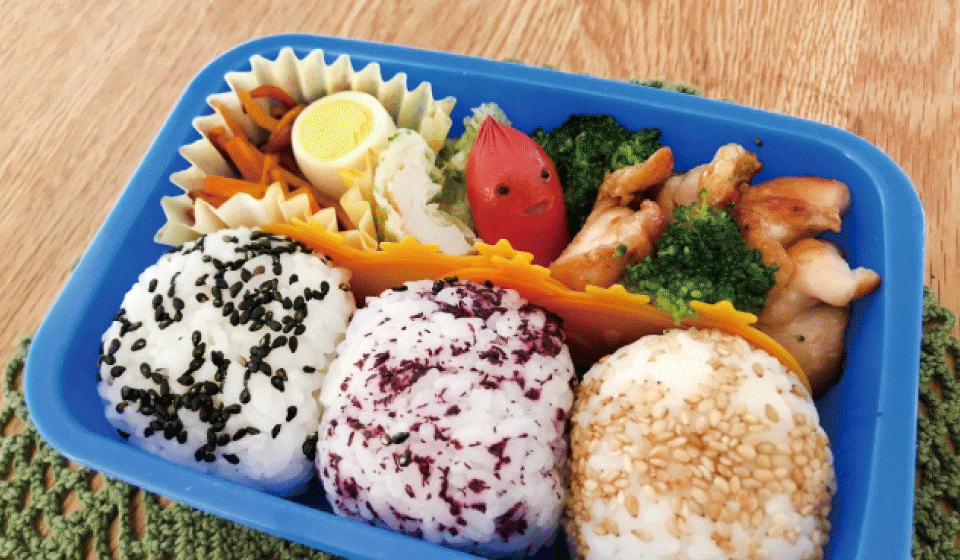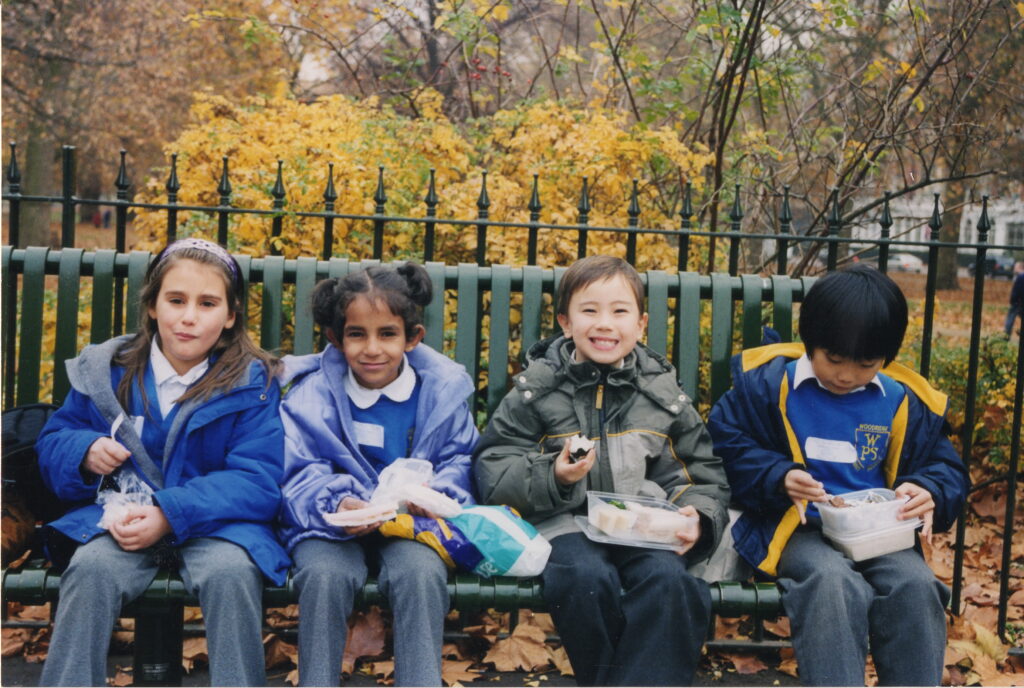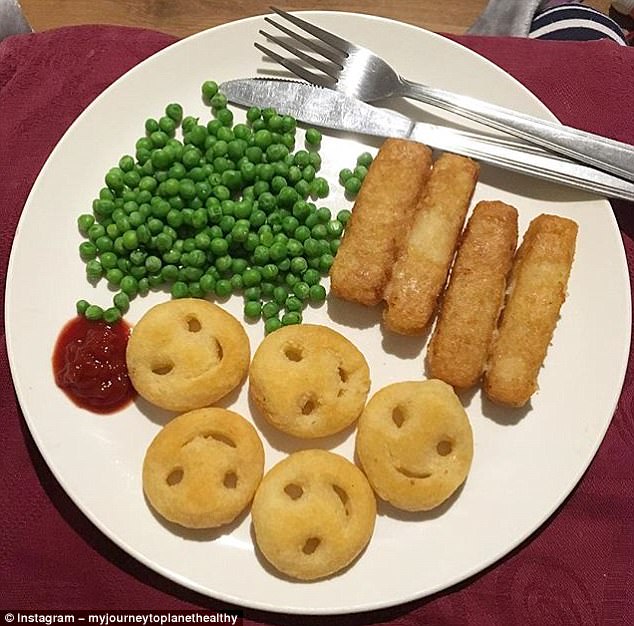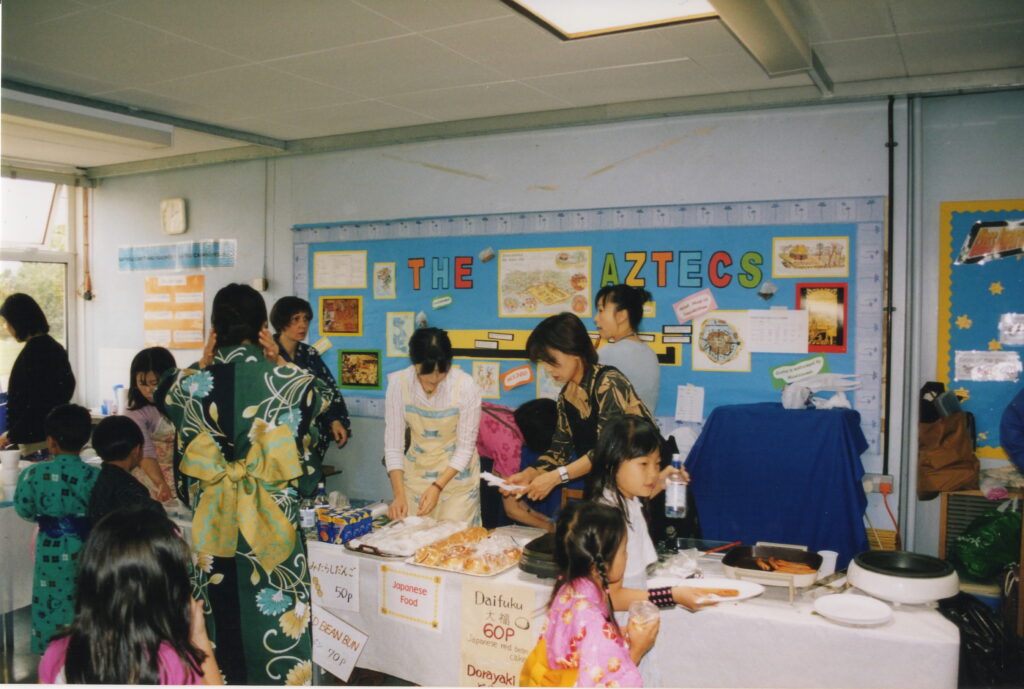In reality, school dinners in the UK aren’t very nutritious or particularly nice, but as a kid the grass was greener on the other side. My Japanese mother is the best cook in the world hands down (as all mothers are); every day she would cook me a healthy bento (packed lunch) with all the necessary food groups. Vegetables, carbohydrates, protein, the works. At home she would cook food from all over the world.

I went to a fairly multicultural primary school in North London with quite a few Japanese expatriate kids. So, for lunch I’d sit with them, and we’d all enjoy our mum’s bento made with love and there was a certain security there. But unfortunately, I still felt embarrassed when I, for example, had to explain what an onigiri was (balls of rice, usually wrapped in seaweed with a filling inside) to classmates. For those who don’t know, Onigiri are a staple Japanese food equivalent to sandwiches. This was the early 2000s when Japanese food wasn’t as commonplace as it is now. The thought of raw fish or even fish for my school mates was an unknown concept and so I was shy when eating my lunch. There were times I physically couldn’t have lunch because I was self-conscious that it smelt funny or looked weird.

I remember early on in primary school asking my mum if I could have school dinners for a winter term. It felt great, I could eat with my classmates without feeling shy about it. But to be honest the jacket potatoes with cheese and baked beans was nothing compared to my mum’s unbelievably tasty bento she put her heart and soul into every day.
Having said that, I really enjoyed when I went to school friends’ houses on playdates because their parents would always offer the best British childhood food. Fish fingers, Smiley faces and some boiled vegetables. The nostalgia this meal and meals alike brings my tastebuds is the reason why I had it so often in my first year of university.

I think it was in late primary school (late 2000s) that my school mates, not all of them to be fair, began to become interested in or started to like Japanese cuisine. There would now be a Japanese food stall at the school summer fetes.

This was also apparent on school trips when my mum made sushi to the request of some of my primary school friends. A stark contrast from a couple years earlier when I was shy and almost hid my food, I was now giving away pieces of futomaki (thick cylindrical sushi roll) made by my mum. This followed me into secondary school. Every time we went on school trips my friends would request for my mum’s sushi.
It became well known at secondary school that ‘Tom P’s mum makes the best sushi.’ Before I went on my year abroad, I invited a group of close secondary school friends for a DIY sushi dinner party at home. Not everyone was fond of the raw fish, so we did cook other Japanese food. If I had told my primary school self that one day, I would invite some friends to a sushi party I would have laughed at you. I learned to openly be proud of Japanese food especially with my non-Japanese friends, albeit massively aided by the growing love for Japanese food across the world.
Now that I have graduated from university and have learnt to cook for myself, I am grateful to my parents for introducing me to what would otherwise be very foreign foods. I love to try food from all over the world and being raised in a multicultural household helped to shape that inquisitiveness.
Growing up, both my Japanese mum and English dad taught me valuable principles: not to be fussy, never to waste even 1 grain of rice and to be grateful for what’s on the table. In Japan people say ‘Itadakimasu’ which roughly translates to thank you for this food. So often I see people not finishing a plate of food and think about these principles above.
Be open-minded, what you may dislike might be other people’s delicacy. Whenever I go on holiday, I want to try the most authentic thing on the menu. In Japan for example, I tried whale and when I was in Korea I tried San-nakji (live octopus).
Be grateful for what you have because other people can only wish to have what you have. This was drilled into me by my mum and was passed down through my Japanese grandparents who lived through the war when rice was a scarce resource.
Finally, to be empathetic as you don’t know the efforts people have made. I learnt this through the experience above. Unbelievably tasty homemade bento that was made by my loving mum was made for me every day but to my mum’s dismay, I would rather have school dinners to ‘fit in’. In reality I have always been very lucky to have someone who made me oishii (delicious) multicultural food every day, that developed my tastebuds to be able to enjoy any and every food. For that I am grateful.

